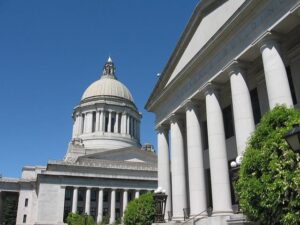California’s New Redistricting Plan: A Strategic Defense Against Partisan Gerrymandering
Governor Newsom Highlights California’s Commitment to Fair Electoral Boundaries
California Governor Gavin Newsom has endorsed the state’s recently ratified redistricting framework as a vital measure to thwart Republican-driven gerrymandering efforts that threaten to skew electoral fairness. Framing the initiative as more than a mere redrawing of lines, Newsom emphasized it as a foundational strategy to uphold democratic integrity and ensure that California’s diverse electorate is accurately represented. “This plan is a safeguard for our democracy, designed to reflect the true political landscape of our communities,” he stated during a recent media briefing.
The core objectives of this redistricting effort include:
- Accurate representation: Districts are realigned to mirror demographic changes and voter distribution more precisely.
- Prevention of partisan bias: New safeguards aim to block future attempts at manipulating district boundaries for political gain.
- Preserving community unity: Boundaries are drawn to keep neighborhoods and communities intact, fostering stronger voter engagement.
| Focus Area | Anticipated Result |
|---|---|
| Protection of Democratic Seats | Maintains majority while encouraging competitive races |
| Republican District Influence | Limits ability to redraw districts advantageously |
| Voter Trust | Boosts participation through enhanced fairness |
Examining the New District Maps: Implications for California’s Political Future
The recently approved electoral maps in California have ignited robust discussions about their potential to transform the state’s political dynamics. Advocates argue that these changes are essential to counteract what Governor Newsom has labeled as “Republican gerrymandering” tactics from previous redistricting cycles. By realigning districts to better reflect population shifts, the maps aim to foster fairer representation and could significantly impact the balance of power in both state and federal legislatures.
Notable consequences of the new district configurations include:
- Improved representation for historically underrepresented communities by aligning districts with current demographic realities.
- An increase in competitive districts, challenging incumbents across party lines.
- Strategic adjustments in campaign efforts as candidates respond to altered voter compositions.
| District | Previous Political Lean | New Political Lean | Effect |
|---|---|---|---|
| CA-12 | Republican | Competitive | Heightened battleground status |
| CA-25 | Democrat | Democrat | Minor demographic adjustments |
| CA-39 | Swing | Democrat | Strengthened Democratic advantage |
Nonetheless, critics warn that despite the plan’s intentions, some district boundaries may unintentionally disenfranchise certain voter groups or create confusing electoral zones. Legal challenges are anticipated as political factions and advocacy organizations scrutinize the maps for potential biases. The upcoming election cycles will serve as a critical test of whether these reforms can truly foster equitable representation and set a benchmark for other states grappling with partisan redistricting conflicts.
Legal and Political Experts Debate the Fairness and Legitimacy of California’s Redistricting
Experts in law and political science remain divided over whether California’s new redistricting approach achieves a fair balance or risks partisan overreach. Proponents highlight the introduction of transparent, stringent criteria aimed at curbing gerrymandering by promoting competitive districts and enhancing community representation. Key features include:
- Utilization of independent commissions to oversee district drawing.
- Strict adherence to demographic and geographic guidelines.
- Protection of minority voting rights without political interference.
Conversely, opponents express concern over ambiguous language within the state’s redistricting statutes that could allow partisan interests to influence boundary decisions. Some legal analysts caution that without clearer judicial standards, efforts to counteract Republican gerrymandering might themselves be vulnerable to accusations of unfair manipulation.
| Aspect | Supporters’ Perspective | Critics’ Concerns |
|---|---|---|
| Independence | Districts drawn by impartial commissions | Potential political bias in commission appointments |
| Transparency | Open public hearings and clear criteria | Legal ambiguities may invite disputes |
| Fairness | Focus on competitive, representative districts | Risk of subjective boundary adjustments |
Ensuring Lasting Fairness: Strategies for Ongoing Oversight and Advocacy
To safeguard the progress made by California’s redistricting reforms, sustained public involvement and advocacy are indispensable. Legislative changes alone cannot guarantee equitable representation without vigilant monitoring, especially as political actors may seek to undermine these efforts. Empowering marginalized communities to actively participate in the redistricting process is crucial to ensuring their interests are reflected in district boundaries that influence policy and resource distribution.
Effective advocacy should encompass:
- Continuous public education campaigns to keep citizens informed about redistricting developments.
- Building strong alliances among civil rights groups, local governments, and voters.
- Leveraging data analytics to detect and challenge irregular district patterns.
- Advocating for legislative reforms to close loopholes exploited by partisan actors.
| Initiative | Responsible Parties | Expected Impact |
|---|---|---|
| Community Education Programs | Advocacy Organizations | Higher voter engagement and awareness |
| Transparency Platforms | State Redistricting Commissions | Open access to data and decision-making processes |
| Legal Oversight | Civil Rights Attorneys | Prevention of unfair district maps |
| Data Monitoring and Analysis | Research Institutions | Early identification of gerrymandering attempts |
Looking Ahead: California’s Redistricting as a National Benchmark
As California implements its newly sanctioned redistricting plan, Governor Newsom’s framing of the initiative as a decisive countermeasure to Republican gerrymandering highlights the intense political stakes leading into future elections. Advocates believe the reforms will foster more balanced representation and fortify defenses against partisan manipulation. Observers nationwide will be closely monitoring how these changes reshape California’s political terrain and whether they establish a replicable model for other states navigating the complexities of redistricting amid escalating partisan tensions between state and federal governments.







